The problem with exotic animal ownership in America
At one point he had hundreds of exotic animals in his possession, but after illegally shipping tigers internationally and plotting a murder-for-hire, he’s been put in his own cage
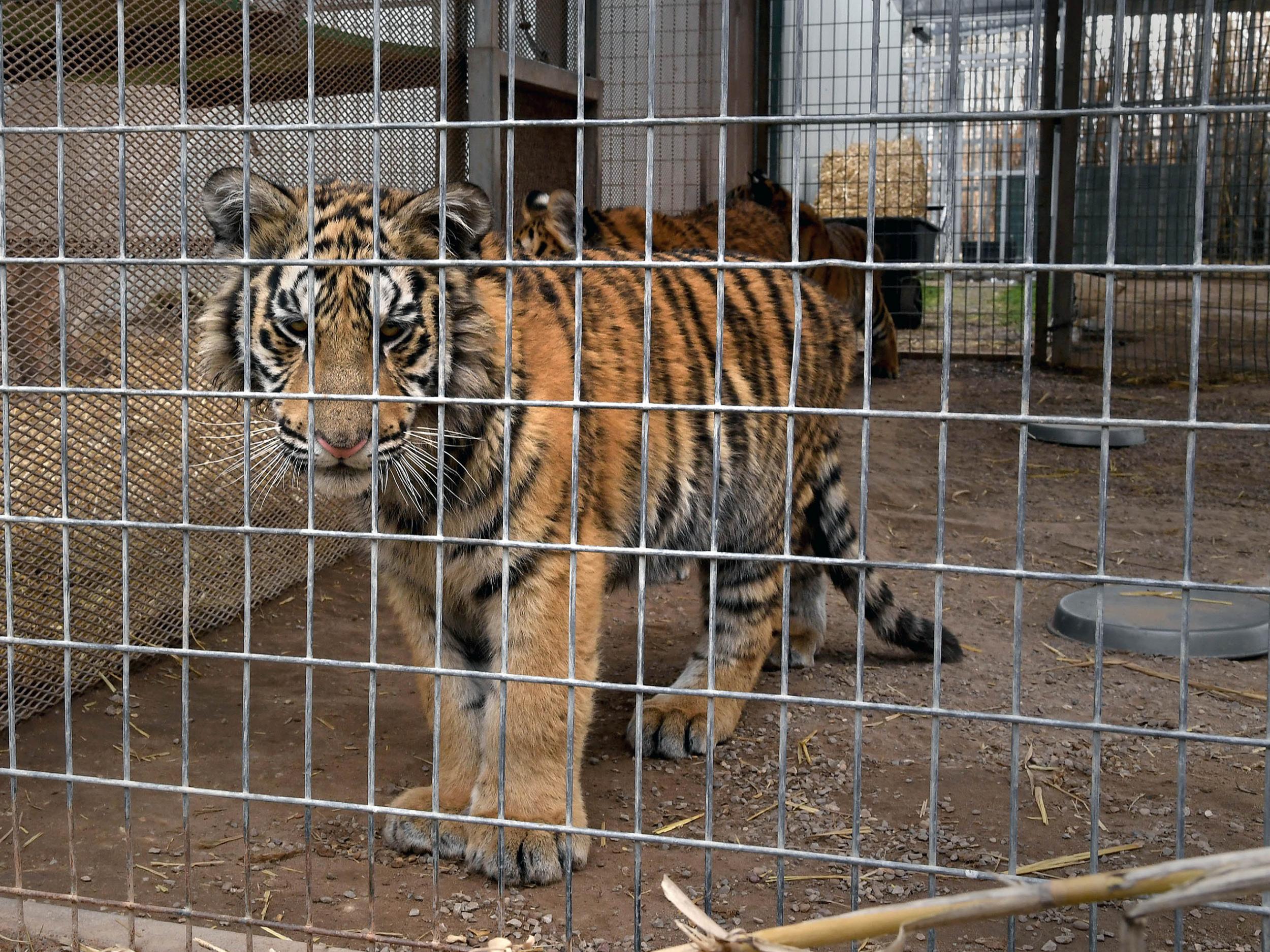
Joseph Passage, rangy and tattooed with a blonde mullet, calls himself the “Tiger King” and “one of the world’s experts in tigers”. He is better known as “Joe Exotic”.
Over two decades, the zookeeper built a menagerie on a 16-acre spread off the interstate in Oklahoma. It housed baboons, wolves, a camel trained to “kiss” visitors and many, many tigers – as many as 200, he claims.
Gregarious and charming, Passage had an irresistible attraction for travellers coming up the highway: tiger cubs, playthings that padded on oversize paws among marvelling visitors who paid to stroke their dense fur.
To meet the demand, Passage became one of the nation’s top suppliers of tiger cubs to individuals and private zoos like his own. Some critics accuse him of cruel exploitation, viewing themselves as tiger saviours.
One made him mad enough to consider murder, prosecutors would later say.
On a chilly day in December 2017, Passage met with two other men in his cluttered, wood-walled office. The trio’s relaxed chatter bounced between jokes, recent balmy weather – and homicide: one of the men was willing to kill Passage’s nemesis. The cost would be $10,000 (£8,200). Passage was deep in debt, but he said he could manage it.
“I’ll just sell a bunch of tigers,” he said, according to an undercover recording by an FBI informant. “Sell a bunch of tigers.”
Passage’s story provides insight into how captive tigers have proliferated throughout America, to the point that there now may be more in the country than in the wild. The use of an iconic symbol of wildness as a sideshow bauble has helped fuel this growth. The big cats have been subject to gradually tightened regulation, but they are still bred and traded with only patchy oversight.
In the Asian forests and savannas that are their natural habitat, wild tiger populations have plunged, leaving fewer than 4,000 of the majestic creatures slinking towards extinction. In the United States, all tigers are labelled as endangered species. But because most of the animals are crossbred “generic” variants of wild tigers and considered not relevant to conservation, the government has been slow to get involved.
A case against Passage, 56, was its first major attempt to crackdown. Last year, he was indicted by federal prosecutors on two murder-for-hire charges and 19 wildlife violations, encompassing several illegal tiger cub sales and the killings of five adult tigers. He was convicted on all of the charges except for two of the wildlife counts in April.
The trial was a highly unusual federal prosecution of endangered species violations involving captive animals, and it exposed basic gaps in oversight. It also forced into a courtroom one of the most contentious battles in US animal circles: the fight over how many tigers live in America, who should have them and how they should be treated.
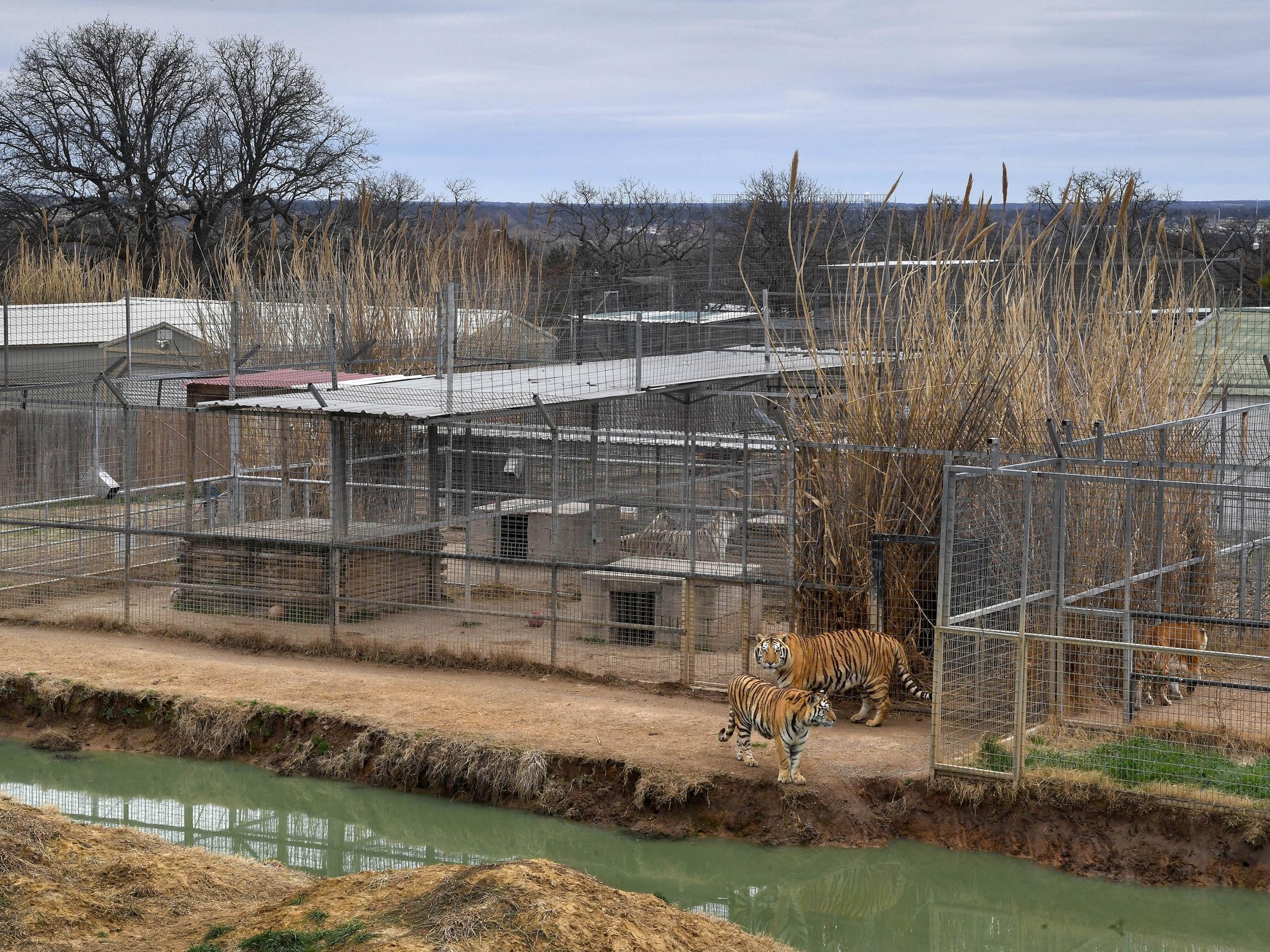
At the heart of the tiger battle is the cub-petting that Joe Exotic’s business relied upon. An analysis by New York University researchers identified 77 facilities offering public contact with baby animals in late 2015 and early 2016, mostly big cat cubs. These allow visitors – whose ranks have included Ivanka Trump’s children – to pet or bottle-feed the animals.
Although it means removing cubs from their mothers shortly after birth and has sometimes resulted in injuries to customers and cats, the practice is legal. But the US Agriculture Department says only cubs between the ages of four weeks (no longer “neonatal”) and 12 weeks (when they become “too big, too fast and too strong”) should be used. That creates an incentive, critics say, for breeders such as Passage to pump out cubs – and a constant supply of 100-day-old tigers that have outgrown their value.
“This is the big mystery,” says Carney Anne Nasser, a Michigan State University law professor who has written about holes in tiger monitoring. “Where do they go?”
Between 2013 and 2018, Oklahoma veterinary records show, the zoo Passage founded, then one of the nation’s biggest tiger suppliers, shipped out of state more than 100 tigers as young as one week old. Cubs could go for as much as $5,000. Dozens were sent to private zookeepers and animal owners in Florida, Indiana, Colorado and beyond. The reach of Joe Exotic was nationwide.
In 2012, according to federal records, he sold eight juvenile tigers to the owner of Ringling Bros and Barnum & Bailey Circus for an unknown sum. In 2015, he obtained an export permit to ship a lion-tiger hybrid to the United Arab Emirates, a Fish and Wildlife agent testified in March. (Passage says he sold two hybrids to Dubai royalty for $30,000.)
In April, one tiger born at Joe’s zoo, 400-pound Kryxis, lay belly-down on an operating table in a cement-floored Indiana garage outfitted as a veterinary clinic. The cat was having surgery for a congenital eye defect.
His journey to the facility, the Exotic Feline Rescue Centre, started after a private owner near Houston gave him up to a rescue network founded by a former Wall Street executive who now dedicates his life to tigers. So far, he has relocated more than 250 from private owners and collapsed zoos to sanctuaries.
Many of those tigers began their lives as coddled tourist draws – adorable miniatures of an exalted wild animal. They ended up as stunning, massive predators destined for a life behind fences, neither fully wild nor fully domesticated.
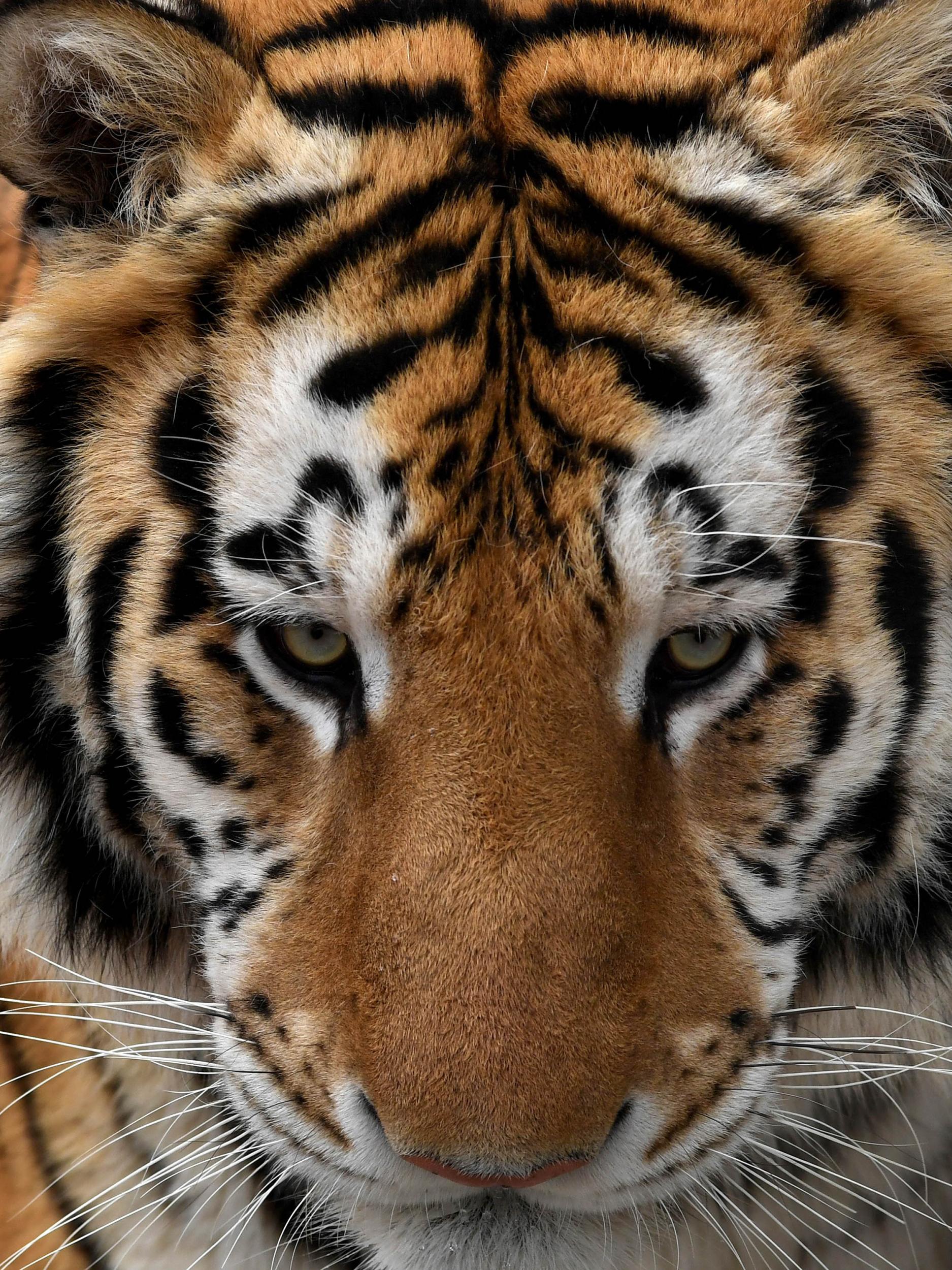
“The commercial life of a tiger cub is 100 days,” says Bill Nimmo, the network’s founder. “The problem is uncontrolled, no-limit breeding.”
As Passage built up his business off a stretch of Interstate 35 between Oklahoma City and Dallas, he operated with few legal restraints.
The US Fish and Wildlife Service, the federal agency that regulates the wildlife trade, added tigers to the endangered species list in 1970. In 2003, shortly after a tiger was discovered in the Brooklyn apartment of a taxi driver, Congress passed a federal law that prohibited interstate sales and the transport of big cats as pets.
But Fish and Wildlife did not police the domestic exchange of most captive-bred tigers until 2016, because they were considered mongrels with no conservation value. Today, it is illegal to sell any tiger across state lines without a permit from the agency.
The USDA, which enforces federal animal welfare laws, requires sites open to the public, such as Passage’s, to be licensed and periodically inspected. Any other rules are left up to states.
And for a long time, many states did not concern themselves with tigers or other exotic animals. Prominent zoos offloaded “surplus” animals to dealers, who might hawk them at auctions. Small zoos flourished, as did the population of pet tigers. Former boxer Mike Tyson famously owned tigers for a spell in the 1990s.
Today, dangerous wild animals that are privately held and not traded across state lines remain entirely unregulated by four states and only lightly regulated in most others. Laws are unevenly enforced and replete with exemptions – for federally licensed zoos and sanctuaries, or universities with tiger mascots, or people who already owned tigers.
In recent years, several states have banned or restricted such pets after attacks or escapes; Ohio, once known as an exotic-animal hotbed, did so after a Zanesville man named Terry Thompson let loose his 56 animals, including 18 tigers, before killing himself in 2011.
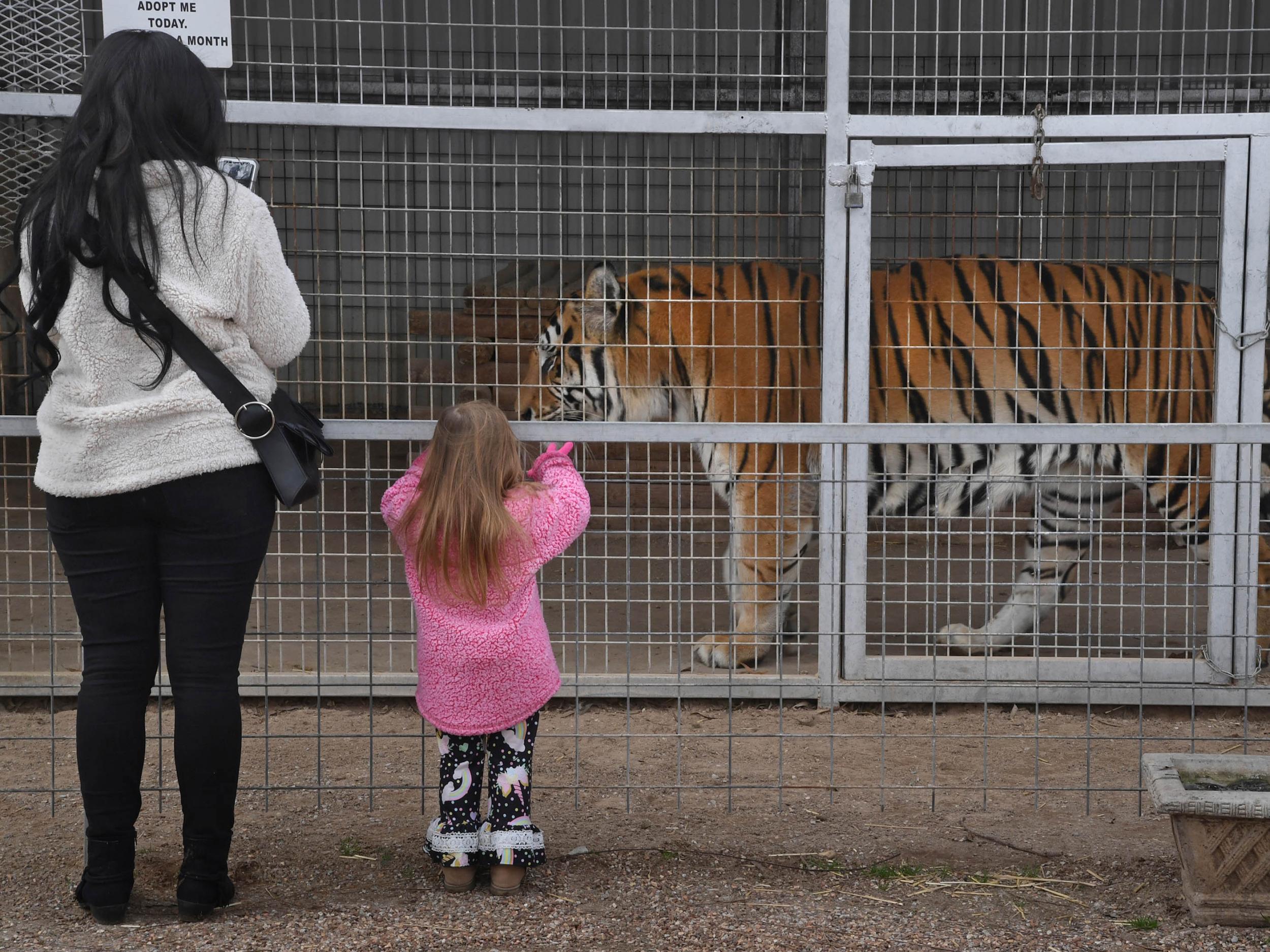
Pet tigers, including a female found in an abandoned Houston house this spring, still occasionally surface. Animal rights activists hold these up as proof of a crisis of tigers in “backyards and basements”, and they are pushing for a federal ban on nearly all private ownership and public handling of big cats. Their opponents, a loose community of exotic-animal enthusiasts and “animal enterprise” advocates, depict those cases as aberrations.
Most tigers are now believed to reside in a vast array of zoos, menageries, sanctuaries and refuges – terms for which there are no agreed-upon definitions.
The mishmash of laws and spotty monitoring have led to wildly divergent population estimates for captive tigers in the United States. Fish and Wildlife says the total “likely exceeds the numbers found in the wild”. The Humane Society of the United States estimates that there are 5,000 to 7,000 caged tigers in this country. In 2016, the Feline Conservation Federation, which advocates for private ownership, used public records and sources in the exotics community to come up with 2,330 tigers.
A Washington Post analysis of USDA inspection reports, obtained via a Freedom of Information Act request, found 234 licensed facilities holding as many as 1,384 tigers between December 2015 and January 2018. Such reports capture only the animals in licensed circuses, zoos and other exhibitors.
The reality is that no one knows how many tigers reside in the United States. There’s no central tiger database. There’s no microchipping requirement. As Passage’s trial revealed, tigers can easily exist off the books.
“To be clear, I don’t care” about the true number, says Nimmo, whose organisation, Tigers in America, puts the population at 7,000. “Because if we’re talking about how many thousands of tigers are outside the zoo system, why are there even 10?”
***
The origin story of Joe Exotic’s zoo goes like this: in the late 1990s, his brother, Garold Wayne, was killed by a drunken driver. Garold always “wanted to go to Africa to see the animals running free”, Passage said in court. As a tribute, Joe and his parents used insurance settlement money to create an animal park near the tiny downtown of rural Wynnewood, Oklahoma.
They called it the Garold Wayne Exotic Animal Memorial Park, known as GW for short. A deer and a mountain lion were among its first residents.

While Passage would need a USDA licence to exhibit and breed zoo animals, Oklahoma has one of the country’s most hands-off approaches to animal ownership, allowing pet tigers and in-state sales.
Shortly after the park opened, a game warden asked it to take in two tigers found abandoned in a backyard in Ardmore, Oklahoma, Passage says. The cats had a six-cub litter within a year, and “by accident” he had stumbled into breeding, Passage says. Before long, zoos and animal parks were demanding more tiger cubs than he could produce, he says.
Passage initially portrayed his business as a sanctuary for mistreated animals.
“He was against private ownership, which of course we all agreed with because none of us wants to see tigers in our jurisdictions,” says Carrie Daley, who for 22 years was the county animal-control officer. “But then he went from being a tiger sanctuary to being a zoo to having tiger cubs that you could play with. His philosophy did a 180.”
Passage, in an interview from jail, says he changed his outlook after attending a convention of monkey owners in 2006. “I saw the people that actually take care of their animals. I went from not supporting exotic animal ownership to supporting private ownership that is responsible.”
In 2006, the USDA fined him $25,000 and suspended his licence for enclosures that were structurally unsound and contained too much “excreta”, among other violations. In 2013, an employee’s arm was partially ripped off by a tiger; that led to a $2,400 fine from the Occupational Safety and Health Administration. In 2017, the USDA cited the zoo after a tiger escaped its enclosure and was shot by staff.
But Passage continued in business. USDA citations rarely lead to pulled licences.
Passage made no secret he was breeding, which was legal. Cubs were raised in Passage’s house on the property, their fluffy bodies swirling around the kitchen floor and in portable baby cribs, former employees say. Adults were fed expired meat donated by Walmart. Peculiar hybrids were created: ligers (male lion-female tiger), tigons (male tiger-female lion), tiligers (male tiger-female liger) and, in 2013, the nation’s first liligers, the offspring of a male lion and a female liger.
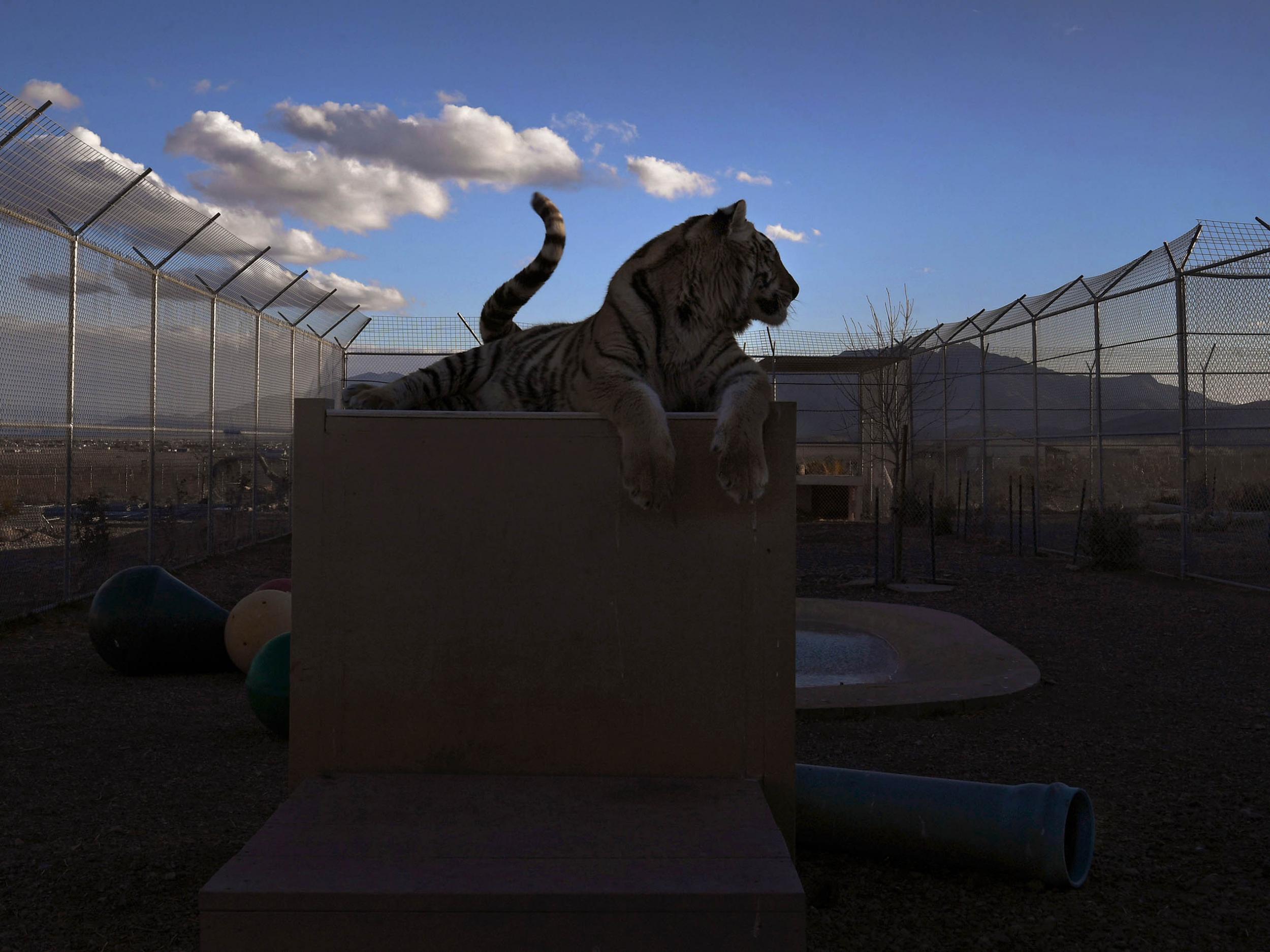
Passage says he never trained his tigers, nor did he have formal training to handle them. “I just walked among them, and the ones that wanted to be loved on came over and I loved on ‘em,” he says. “God gave me a gift. I should be dead 30 times ago.”
On good days, Passage says 200 families would come to the park, and 75 per cent of them paid $45 to $55 for short “playtimes” with tiger cubs. “It was a huge draw,” he says. “It did pay the bills.”
For several years, Passage took as many as 10 tiger cubs – along with baby lions and bears and small farm animals – on a roadshow around the country. The act, called “Mystical Magic of the Endangered”, combined petting sessions with magic tricks, admonitions to avoid drugs and alcohol, and messaging about the plight of wildlife.
Passage is a natural performer – droll, self-deprecating and bursting with jittery energy. He’d later fill his zoo gift shop with Tiger King-branded condoms and candy.
Eventually, the spectacle caught the eye of Carole Baskin, founder of a well-funded Tampa sanctuary called Big Cat Rescue. Earlier in her career, she’d bred and sold exotic cats and had displayed a tiger at public events. But by this point, she strongly opposed both practices.
She singles out Passage on her website, 911AnimalAbuse.com, designed to call attention to animal exhibitors she viewed as “bad guys”. Baskin asked venues to cancel his shows and her followers to protest them.
Passage would later claim in a court filing that cancellations cost him three-year contracts with 265 properties worth a total of nearly $10m. In 2010, he retaliated by renaming his travelling company “Big Cat Rescue Entertainment” and adopting a logo similar to Baskin’s Big Cat Rescue. Baskin’s sanctuary sued him, and in 2013, it won a $1m judgment.
Passage filed for bankruptcy, dissolved his business, transferred assets and later sold the zoo to a man named Jeff Lowe, but he continued running daily operations until 2018. Baskin’s attorneys say it was all an effort to avoid paying her. Passage also attacked her on his online shows, Joe Exotic TV and Joe Gone Wild.
During this time, people who worked for Passage noticed things that troubled them.
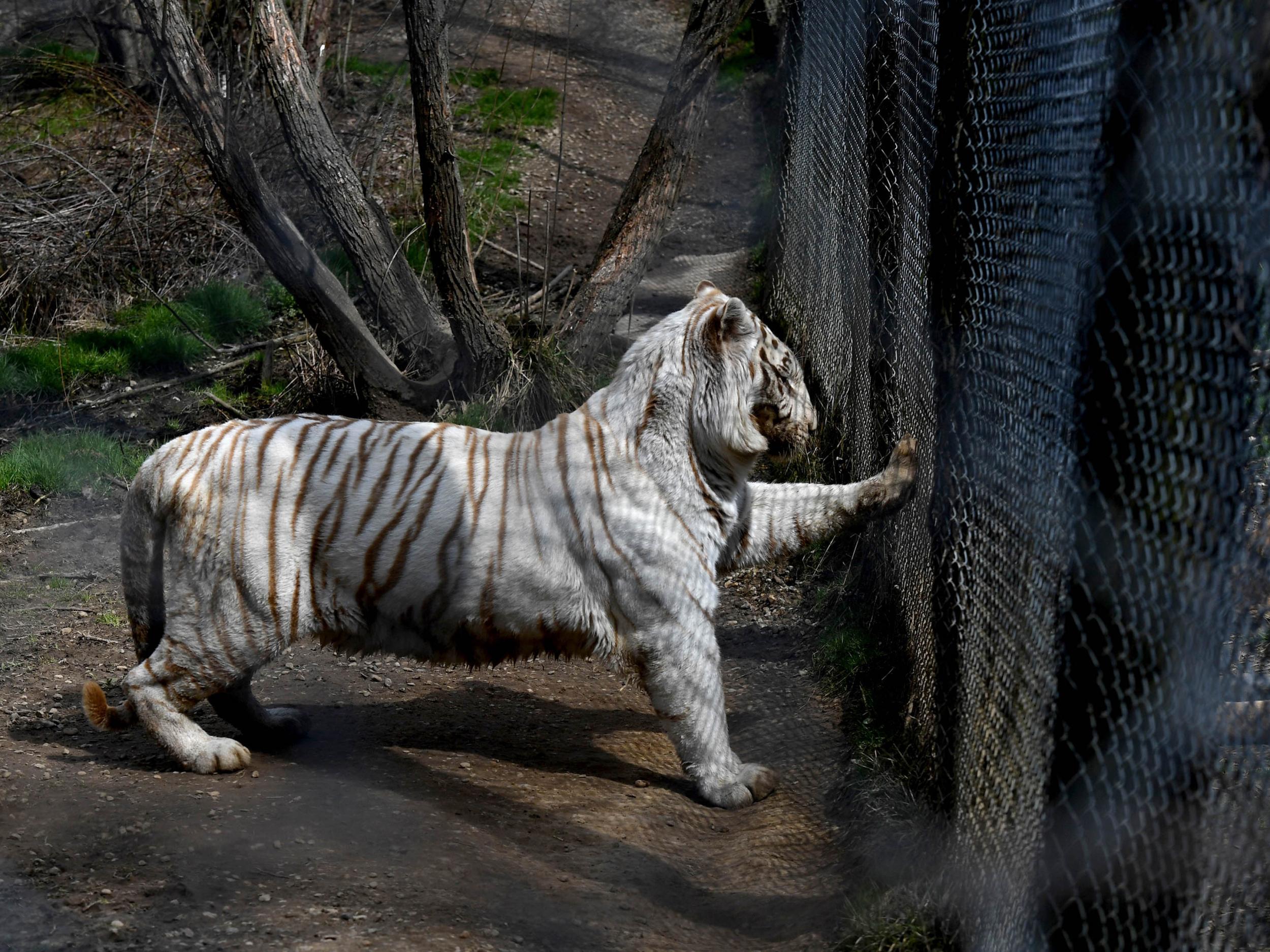
David Stanton, who ran Passage’s video operation in 2012, says that newborn tigers were sometimes removed within 20 minutes of birth to be raised by hand for use in petting or the roadshow.
“Baby tigers are like money in the bank to them,” says Stanton, who lived at the park for eight months, had a falling out with Passage and later submitted a complaint about the zoo to the USDA.
JD Thompson, the director of a 2016 documentary on Passage, says he believes that “Joe’s love of animals is, or certainly was at one point, sincere. But money interfered along the path and forced him to figure out ways to monetise his obsession.”
Passage now says business pressures forced him to try to maximise.
“I have a lot of regrets that I sent tigers to a lot of people,” he says. “What I would do over is I would never grow to the size that I was. It was all about being the biggest... and in order to do that, the bills went bigger.”
***
One tiger born at the zoo Passage founded, Spunky, now lives at the foot of rocky Nevada hills on land owned by Zuzana Kukol, a defender of what she calls responsible exotic animal ownership. She has nine other tigers as well as lions, cougars and other exotics she considers pets. Feeding alone takes three to four hours daily.

“He’s going through a growth spurt,” Kukol, wearing a tiger-printed cap and gloves in bone-chilling February wind, says of Spunky, who brushes against his chain-link enclosure as she crouches to greet him. “He’s like a teenager! He eats all the time.”
Spunky, who is now nearly two years old, came to Kukol through a circuitous route. Lowe, the man who purchased the Wynnewood zoo from Passage, took the cub to Las Vegas and was charged with lacking required permits in a case that is still open. Lowe declined an interview request.
Authorities confiscated Spunky and transferred him to Kukol, who lives on the outskirts of Pahrump, Nevada, on a property with a nine-foot perimeter fence and guard dogs.
Sixty miles west of Las Vegas, Pahrump and the surrounding area are home to brothels, marijuana farms and a surprising number of tigers. Though growing rapidly, the town of 36,000 is still a place where people move to be left alone.
Kukol, a 54-year-old who came to the United States as a refugee from Czechoslovakia, got her first tiger 20 years ago, when living in Washington state, a place she found too rainy. She had also lived in California, which she now scorns as a “socialist republic”. Rural Nevada beckoned.
Her 10 tigers live in spacious enclosures equipped with misters for the baking summers and small swimming pools. “Tie-outs”, or metal stakes with attached rings, dot the property and serve as spots where Kukol and her partner, a retired defence contractor named Scott Shoemaker, can attach the tigers’ leashes while on walks.
“They are better on a leash than our dogs,” Kukol says. But, she adds, “I never let my guard down.”
Shoemaker says people don’t understand that tigers are not the “vicious animals you see on National Geographic tearing animals limb from limb in the wild... These animals are 40 to 50 years removed from the wild”.

Several of Kukol’s tigers are “retired photo cubs” given to her by a major South Carolina breeder, Kukol says. They are “the best animals”, she says, because early handling helped make them gentler.
Kukol and Shoemaker lobby lawmakers in Nevada – one of the states with no private ownership restrictions – against new regulations. Their organisation is called Responsible Exotic Animal Ownership.
“My answer is: Why not?” Kukol says. “I’m not taking them from the wild. I’m not hurting them. Why not?”
The problem, Kukol says, is not a lack of laws, but a lack of enforcement. Passage long operated “a tiger mill”, she says, but no one stopped him.
In 2016, Nye County sheriff’s officers found three young tigers at a Pahrump house “loose in the back yard running around, eating raw chicken quarters and playing”, according to an incident report. “The back yard had only a 4ft field fence.” They arrested the owner, a woman from Texas who had no permits, and authorities relocated the animals to Kukol’s property, where they remain.
“It’s a subculture,” says undersheriff Michael Eisenloffel, recalling that the woman spoke of being an animal broker who could even acquire a giraffe. “It just kind of blew my mind that it could be that simple.”
Eight more tigers live not far from Kukol’s house, on a remote lot with three no-trespassing signs. The cats are owned by former Hollywood animal trainer Karl Mitchell, 66, and his wife, Kayla. They met at the local Walmart when she rang up his purchase of chicken – for the tigers – and she asked whether she could come over to touch one.
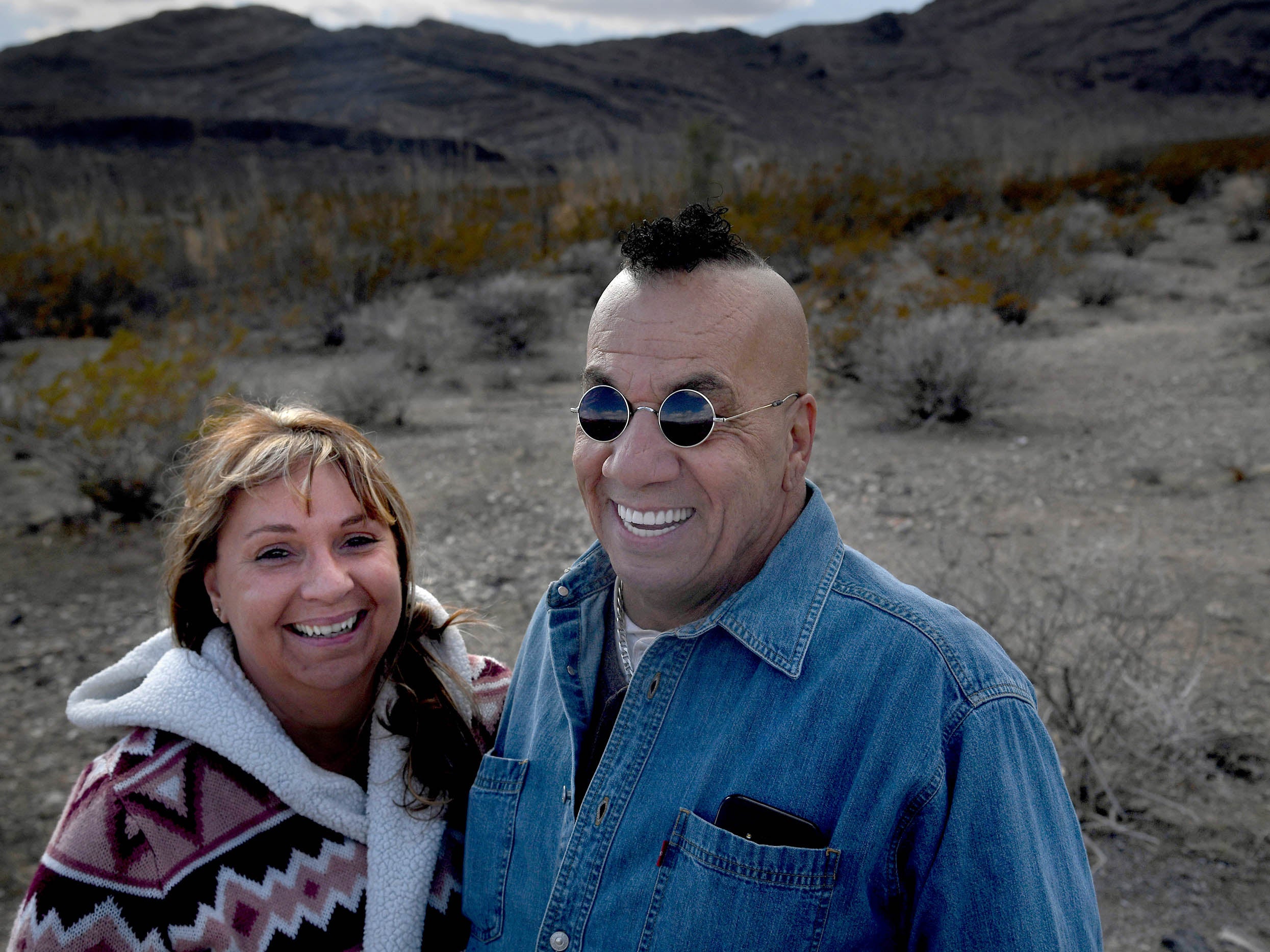
Karl says he moved to Pahrump in the 1980s when a friend told him “you can have tigers out there”. Over the years, he has received at least four tigers from the GW zoo in Oklahoma.
The tiger enclosures appear modest but tidy. Kayla briefly slips inside their trailer home to prepare a bottle of puppy formula for Abraham, who at 18 months did not require it. It is a bonding thing, she says.
“Hi, baby!” she coos, poking the nipple of the bottle through an opening in the cat’s cage. The milk drips from his white beard as he sucks, emitting a contented-sounding growl. “I made it warm for you! Yes, I did!”
A small wooden bridge leads to a spring-fed pond amid bamboo, which Karl says the tigers use “like a private tub”. Bordering the property is federal land with a dry lake bed, where the Mitchells say they take leashed tigers for walks.
The county spent much of last year in conflict with Karl.
After he applied for a county permit to keep tigers on his property, the sheriff’s office produced a report saying he had exhibited his cats without a required local permit or USDA licence, and included testimony from a Las Vegas magician who said he’d paid Mitchell $750 to display Abraham, then a cub, at a birthday party at the Tropicana hotel and casino.
Karl says he did not renew his USDA exhibitors’ licence in 2001, though federal records make clear the agency revoked it for a litany of violations – including failure to provide tiger cubs with sufficient water – and went on to fine him more than $100,000.
But Karl, a Vietnam veteran who says he has post-traumatic stress disorder, never gave up on the animals. Nye County reissued his local permit in February after he argued that his cats were “emotional support tigers”.
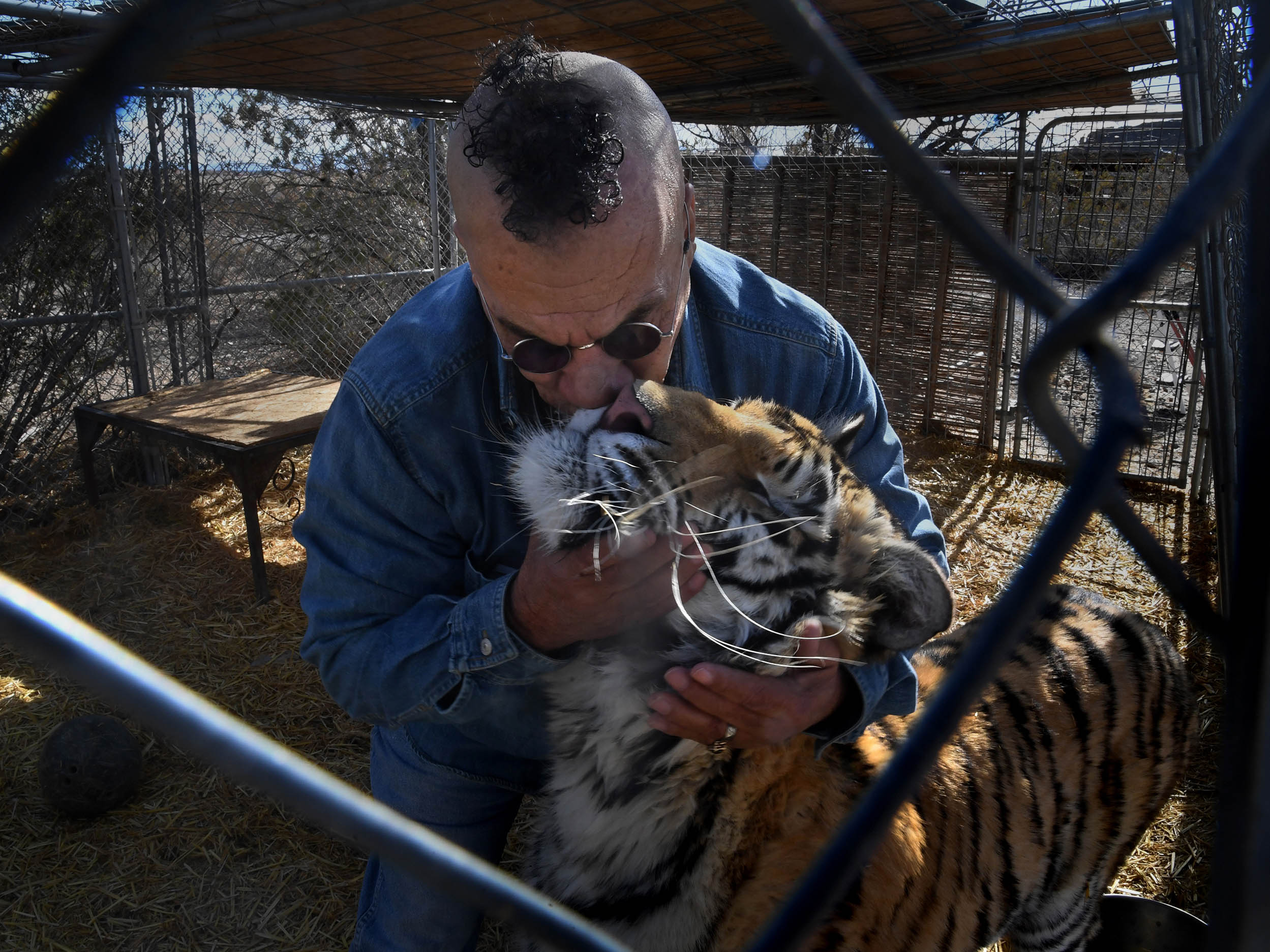
“A tiger will look at you and see the spirit you carry with you,” Karl says.
Yet he emphasises that tigers are personal property – “a commodity”. And taking them from owners who raise them, he says, “is barbaric”.
***
For decades, Fish and Wildlife paid no attention to cats like Spunky or Abraham – “generic” mutts that make up the majority of tigers born and raised in the United States. The agency’s domestic-tiger concerns centred on pure subspecies, nearly all of which are now believed to live in facilities accredited by the Association of Zoos and Aquariums, or the AZA.
Its zoos hold about 275 tigers, and most are part of managed “survival programmes” for three subspecies: Amur (formerly known as Siberian), Sumatran and Malayan. The idea is to have backup populations in case wild tigers disappear.
Although generic tigers have been officially considered endangered since 1970, and selling them across state lines was not legal unless done for a conservation purpose, the agency did not regulate their trade.
Animal rights activists and conservation groups pressure the agency to address this, arguing, among other things, that unmonitored tigers could end up in the illegal global trade in tiger parts. There’s no evidence that has happened, officials say.
A change took years, former Fish and Wildlife director Dan Ashe says, because the Office of Management and Budget was wary of further regulating small businesses. Also, he acknowledges, “it wasn’t a priority for us”.
In 2016, the agency approved a rule that required any seller of generic tigers across state lines to get the same permit needed to trade in purebreds. Passage never applied for one.
Ashe, who today is president and CEO of the AZA, says that rule is not enough to get a handle on captive US tigers. His organisation backs a proposed federal law that would ban nearly all private ownership of big cats and prohibit public contact with them – ending cub-petting.
“The main objective should be to stop this kind of unethical breeding and commerce in big cats,” Ashe says.
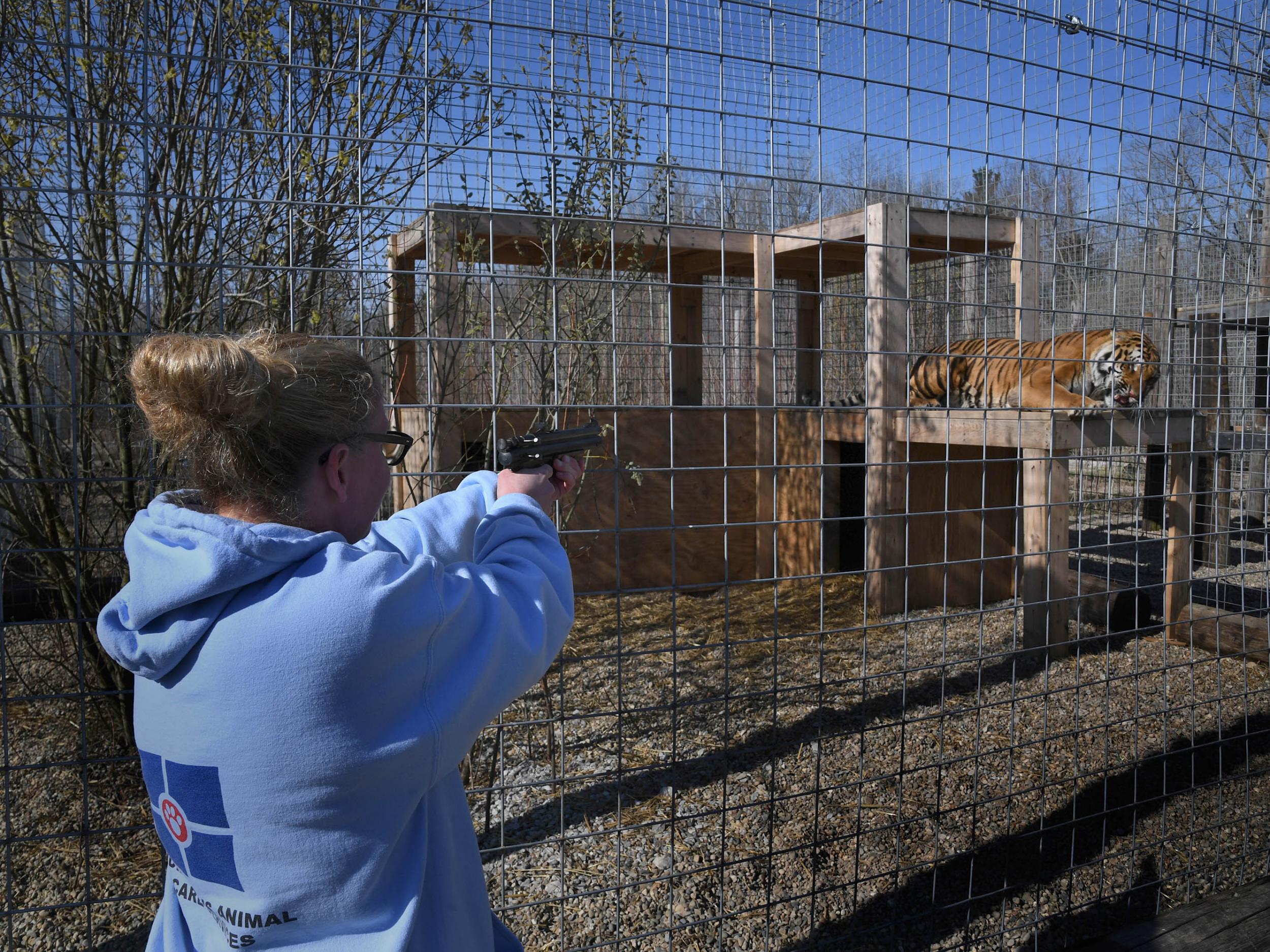
The Feline Conservation Federation and other non-AZA operators hate the bill – the Big Cat Public Safety Act – saying it plays on fears of attacks at a time when most people injured by tigers are those who work with the animals. The exotics enthusiasts say that operators like Passage are outliers and that activists really want to end all animal captivity – including in AZA zoos – at a time when shifting public sentiment has already led to the closure of Ringling Bros and SeaWorld’s orca breeding programme.
All tiger breeding, critics of the bill say, is important in a world where the wild population is on the road to extinction. Some researchers agree. Brian Davis, an evolutionary biologist at Texas A&M University, says his preliminary analysis of DNA samples from hundreds of generic tigers has found they harbour a genetic variation that could help ensure the health of captive-bred populations.
“They’re all tigers,” Davis says. “They all need to be conserved.”
The 2016 generic-tiger rule made clear that any of Passage’s out-of-state sales from then on would be illegal. But more than a year after its implementation, he was unconcerned. He had never been visited by Fish and Wildlife in 20 years of business, he says.
“Why are they on the Endangered Species Act?” he mockingly said of tigers in 2017, according to a recording played at his trial. “Nobody can track them.”
To evade oversight, Passage simply falsified or did not fill out USDA or state veterinary forms, which asked whether the purpose for transferring an animal was a sale, donation or some other activity.
Before the 2016 rule, Passage’s veterinary forms, obtained under a public records request, regularly showed sales. In December 2014, for example, he sold two two-week-old tigers to a Florida man.
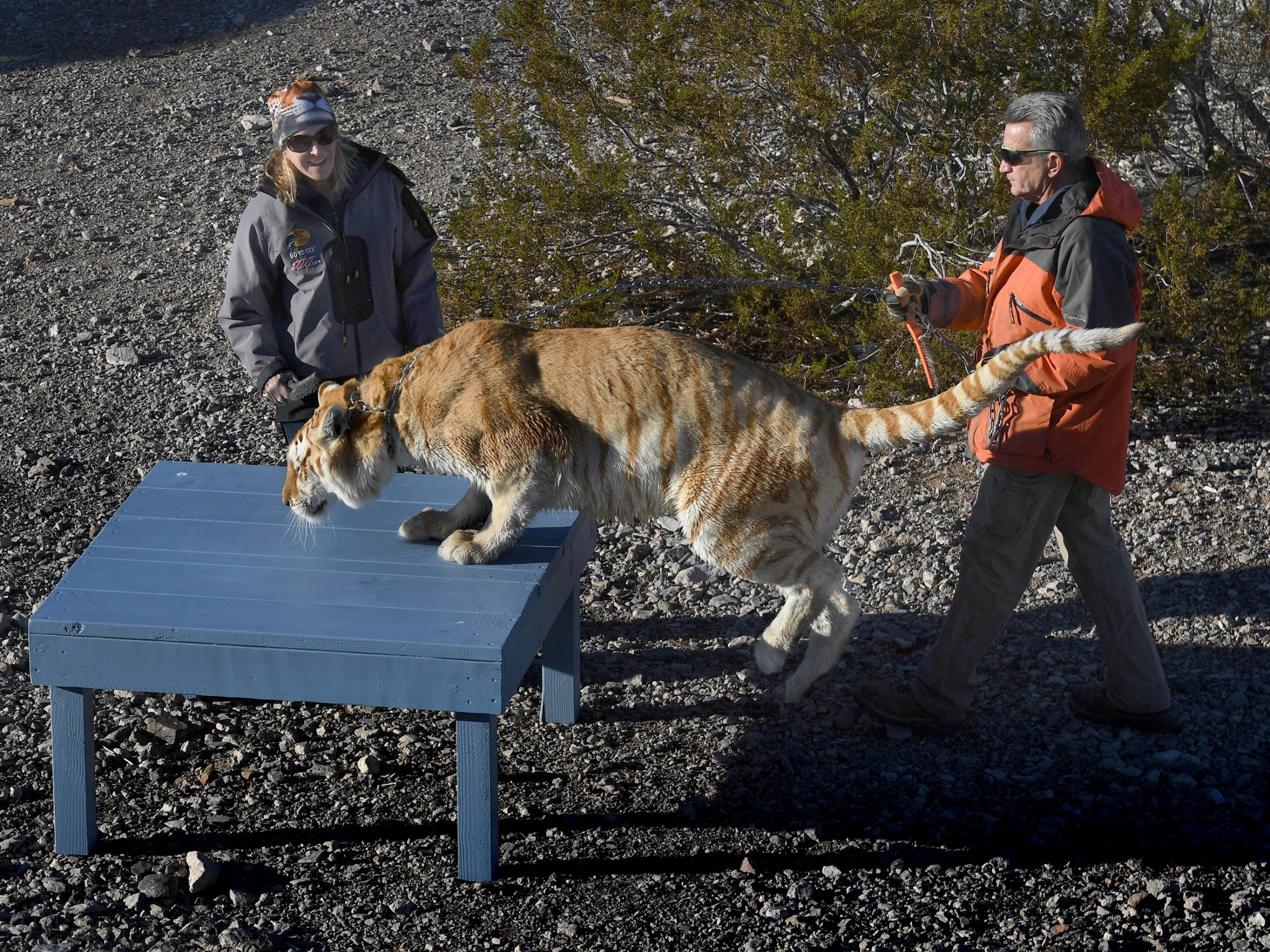
After the rule change, most of the transfers were marked “donation”, records show. Giving away tigers – the zoo’s product – might not make much sense for a man saddled with lawyers’ fees. But it would be legal.
It also wasn’t true, according to testimony from Passage’s friend, James Garretson, who secretly recorded him for the FBI.
“That’s, I guess, standard practice in this industry ... everyone marks donation,” says Garretson, himself the owner of half a dozen tigers. A prosecutor asked when “sale” is used. “In my years, I’ve never seen one,” he replied at the trial in March.
At Passage’s zoo, animal inventories – which are required by the USDA – fluctuated wildly, records obtained by People for the Ethical Treatment of Animals show. On 10 March 2014, it had 79 tigers. On 25 March 2015, it had 101. Four months later, it had 87.
Current and former USDA staffers familiar with the inspection process, and testimony at Passage’s trial, provide an explanation: inspectors don’t routinely follow up on transfer records to make sure an animal was truly sent to the destination indicated on the form.
“You don’t always see all the animals. They’re in their dens, or they’re nocturnal,” says one recently retired inspector, who was not authorised to speak publicly. “We’re kind of constrained. We’re looking at a tiny snapshot of a place.”
At Passage’s trial, prosecutors played a recording of the zookeeper telling Garretson how to explain the acquisition of a baby tiger to USDA inspectors. Already have a male and female? Say it was their offspring, Passage said. How to get rid of a tiger? “Just off it and say it died,” Passage replied.
On a property list entered as evidence in court were 13 pages of animals Passage valued at a total of $361,000. Some tigers were worth $5,000, he wrote.
At the zoo, Passage made no secret of the fact that he was selling cubs, says Josh Dial, who worked there in 2017 and 2018.
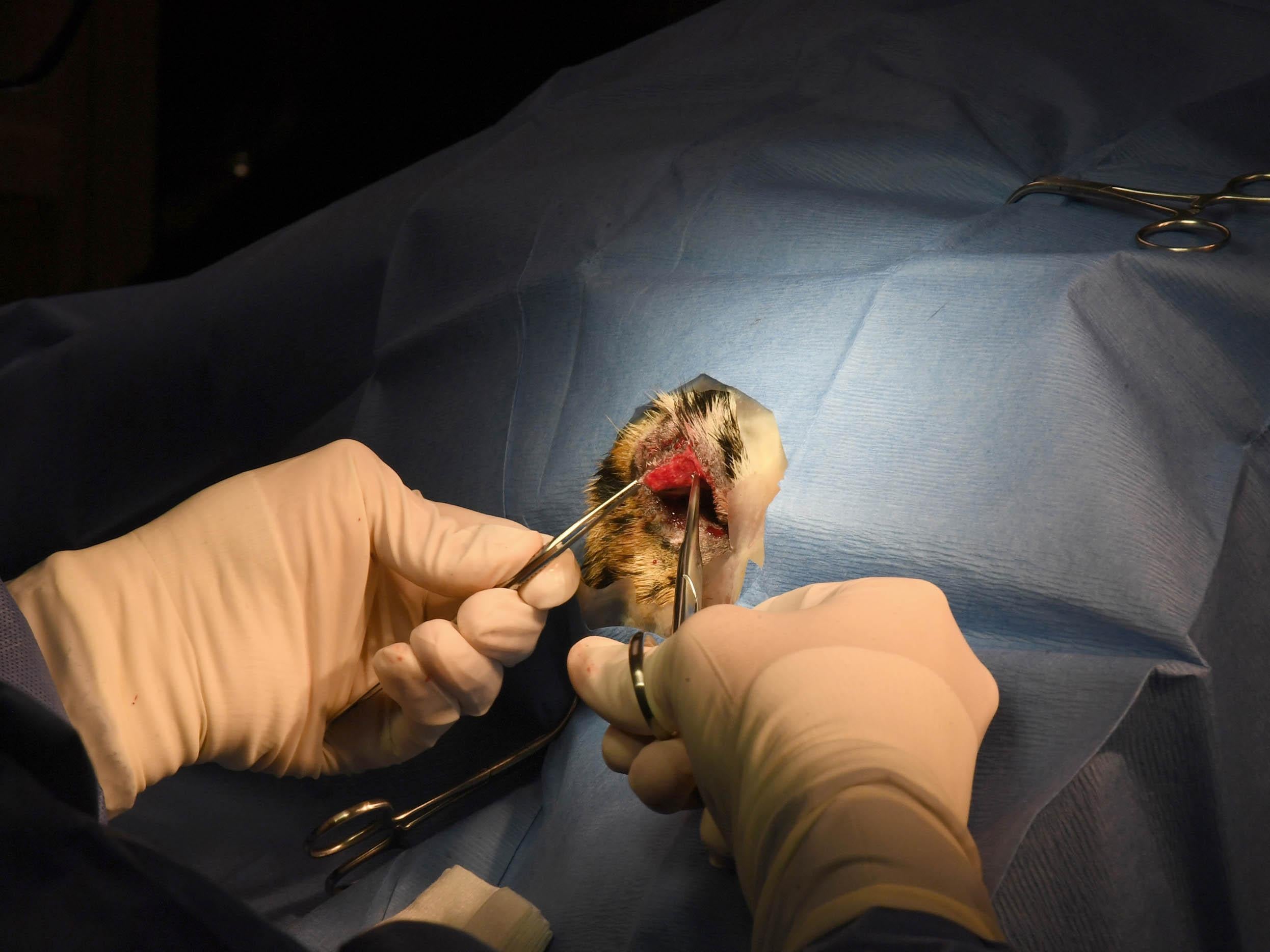
“He’d go around to the cages, to the female tigers when they were pregnant, you know, ‘Hurry up, bitch, pop ‘em out, we need to make payroll,’” Dial says. Because of the $1m judgment against Passage, Dial says, “the only way he could get money was under the table by selling tigers”.
Passage, by this time, was also running a quixotic campaign for governor of Oklahoma as a libertarian, and he’d hired Dial to run his campaign after they met at Walmart. Dial lived at the zoo, doing what he called “damage control” – trying to convince Passage that banning transgender people from public restrooms was not a libertarian position, for example.
“It was all about publicity,” Dial says of Passage’s run, which ended with a last-place result in the primary. “It was about bringing people into the zoo.”
In October 2017, prosecutors alleged, Passage killed tigers for profit. A circus wanted to pay $5,000 to board big cats for the winter. The cages were full, two employees testified. One said he helped identify five tigers – those in cages 40, 42 and 81 – that were not breeders and were, therefore, less valuable. Another said he watched Passage shoot the cats, which had been sedated, with a .410 shotgun.
Passage testified that the tigers were crippled, and that in a moment of shame over using the cats to “suck donations” from visitors, he decided to euthanise them. Shooting them would be “twice as fast” as lethal injection, he said, and he “had a legal right”. But while the Endangered Species Act allows euthanasia, shooting them in the head without a veterinarian’s approval would not qualify, prosecutors said.
Fish and Wildlife agents exhumed the tiger corpses a year later and found them buried in a row, “like hot dogs in a pack”, an agent testified. A federal forensic pathologist who examined them testified that all seemed healthy.
***
Several of Joe Passage’s tigers have been rehomed by Tigers in America, the rescue network run by Bill Nimmo and Kizmin Reeves.
The pair stumbled into the tiger world in 2011. Nimmo knew a New Jersey woman whose 24 tigers had been seized years before and moved to a massive Texas facility. When that place went under, Nimmo wanted to take care of the Jersey cats. The pair funded their move to two sanctuaries.
Word got out, and calls came in. Would they help relocate other tigers? They had means. They would. Nimmo, who worked for Smith Barney, and Reeves, who worked for Merrill Lynch, quit Wall Street for tigers.
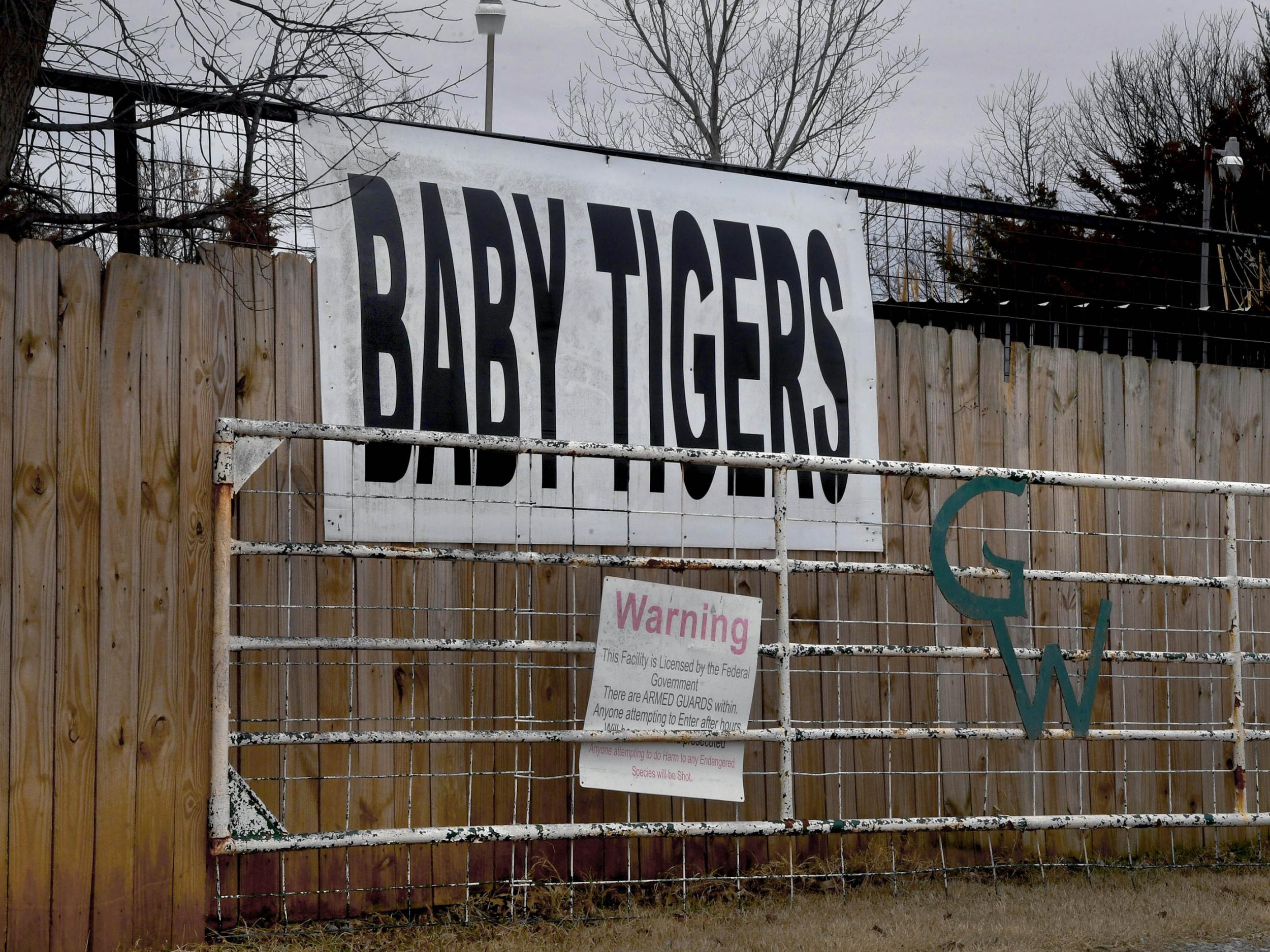
Their organisation mostly stays clear of tiger politics. They want it to serve as a crisis hotline – where anyone can surrender a tiger and face no judgment. They require owners to sign a contract swearing off exotic pets.
Earlier this year, Nimmo laid a spreadsheet titled “THE RESCUES” on the coffee table of their West Village townhouse. As of December, Tigers in America had helped relocate 252 tigers in 17 states and a few foreign countries, the spreadsheet showed, plus a few dozen lions, cougars and other animals.
Seventy-five tigers came from the purchase of a major Colorado breeding operation and zoo. Records showed 24 of them were born in Passage’s zoo.
The acquisition left Tigers in America with trailers and trucks that it now uses for transport. The organisation also arranges and pays for veterinary care and enclosures. The cost so far: more than $1.3m, most of it from Nimmo and Reeves.
Most of the group’s other tigers came from “roadside zoos”, the spreadsheet says. About 60 came from small breeders or private owners, including some, Nimmo says, retrieved after local sheriffs called fretting about tigers in their midst. Nimmo calls this “the sheriff’s dilemma”.
Reeves is the one who consoles distraught pet owners, such as an elderly North Carolina couple who, in 2014, gave up two healthy tigers.
“They had the most beautiful enclosures. Everything was wonderful. Except the old guy broke his hip. He couldn’t do the physical work,” says Reeves, who tells such owners “some version of: ‘They will have a good place to stay. They will have pools.’”
“And lifetime care – you can visit them anytime you want,” Nimmo adds.
Tigers in America places cats at 17 sanctuaries that Nimmo says he identified after two years of vetting. His criteria include “no breeding, no cub handling”, “forever home”, “large enclosures” and “long-term viability”.
***
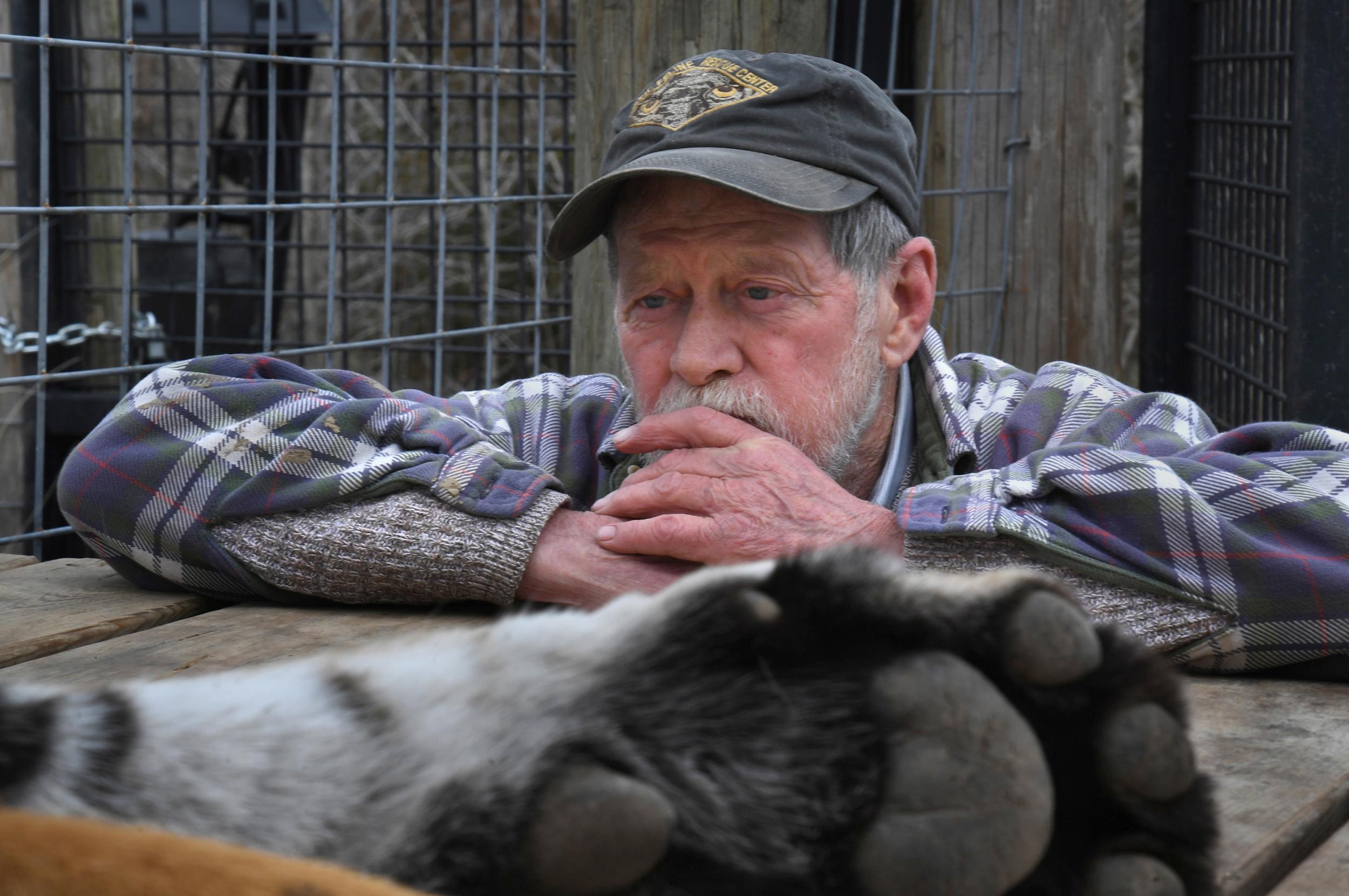
One sanctuary in its network is the Exotic Feline Rescue Centre, an hour west of Indianapolis. Its owner, Joe Taft, who worked in construction before founding his sanctuary in 1991, has become a go-to for state and federal agencies that need to place confiscated cats. He’s taken in tigers removed from a tattoo parlour, tigers seized during a 2002 federal bust of a captive-animal-hunting operation, and many circus performers.
In the garage is a laminated newspaper article showing him, years ago, in his kitchen with a tiger, one of the exotic cats he used to cohabitate with. It’s not an unusual origin story in the sanctuary world.
Taft, 73, says those days are behind him, though he’s not dogmatic about tigers as pets. Regulations should set standards that make it expensive and underscore that it’s a “serious commitment”, he says.
“People can have good relationships with big cats,” he says, acknowledging that “there’s conflict” in his position.
When Kryxis arrived at the Exotic Feline Rescue Centre, he was physically healthy. But his eyes were not, and neither were those of his sister, Kadira. They were constantly irritated, Kryxis’ almost to the point of being shut.
Their owner had initially offered them and his third tiger to a Texas exotic animal sanctuary. He wanted to make a change in life, he told the sanctuary’s president, Vicky Keahey. Keahey had no space for the cats – a common problem.
But she knew whom to call: Tigers in America. It placed them with Taft.
In the garage clinic, a veterinary ophthalmologist from Indianapolis, Heidi Klein, is stitching Kryxis’ eyelid together after removing a triangular section that was missing the dark rim elsewhere. His other eye had the same flaw, as did Kadira’s eyes, which Klein says suggested the problem was congenital. Inbreeding was “one possibility”, she says.
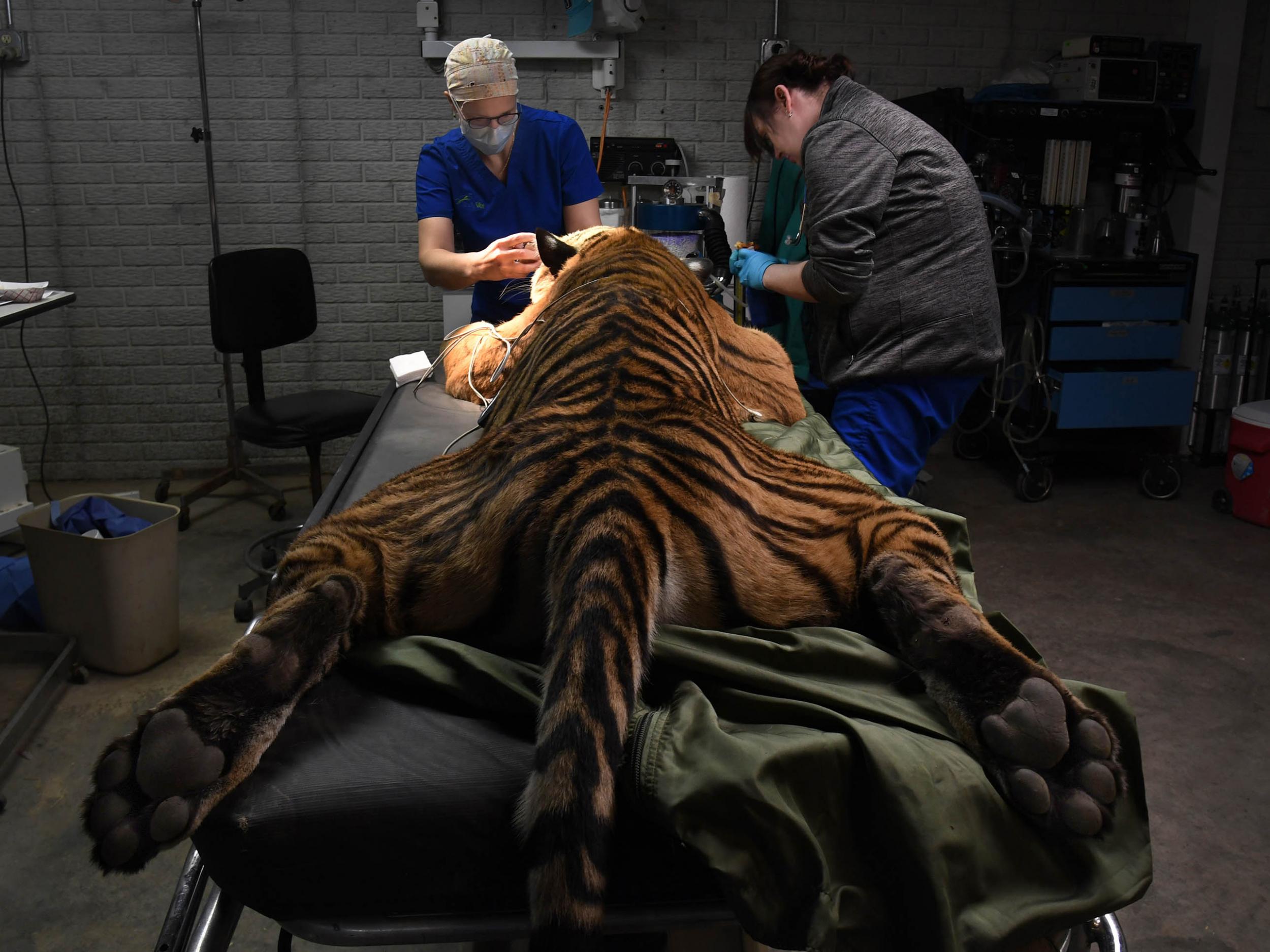
By the afternoon, both cats are sleeping off their anaesthesia in a new enclosure with a tall, wooden climbing structure. Taft tries to pluck a whisker from Kryxis to send to a researcher studying generic tiger genetics, but the cat stirs, and Taft thinks better of it.
“You know, the first object of this is to be able to do it again in the morning,” he jokes. Around him were acres of cats, including more than 100 tigers – the kind of volume that leads some critics to say sanctuaries like Taft’s stockpile cats, not that different from less scrupulous operators like Joe Exotic. Taft mulls this.
“You’ll never see me kill any of my tigers,” he says.
***
Passage took the stand on 2 April, the last day of his trial. He wore a suit, his neck tattoos poking out of a button-up shirt. His face looked drawn. His legal name is Maldonado-Passage, but prosecutors referred to him throughout the trial as “Mr Passage”.
By this point, prosecutors had shown pages of records of tiger cubs being “donated” to out-of-state facilities. Passage’s former boyfriend had testified about driving tiger cubs across the nation to recipients who handed him cash, which always “went straight to Joe”.
They had played recordings of Passage discussing a plan to have an employee go to Florida to kill Baskin. They had offered evidence that he had given the employee $3,000 to do it. They had chronicled his numerous Facebook and video threats: shooting an effigy of her and standing with a shovel and saying, “We’re going to bury Carole”.
Passage testified that he was never serious about killing Baskin. He argued that if he was breeding 50 endangered tigers a year and had “euthanised” the five found on the property, “I should get credit for 45 more,” he says.
Speaking from jail, Passage says that all profits from cub sales went to Lowe starting in 2016 and that therefore he should not have been charged with illegal sales. He also says he’s had an epiphany while behind bars: zoos should be cageless.
“I think you should be forced to have at least one acre per animal, so they can at least live somewhat free instead of in a 20-by-20-foot cage,” he says. “This is what has come out of me being locked up and fed whatever they want to feed me. Lights turned off when they want them off. You know, this is crazy.”
Prosecutors dropped two of the wildlife charges during the trial. It took the jury mere hours to convict Passage on all remaining counts. “He’s now in a cage,” says Brittany Peet, a lawyer for Peta, one of Passage’s longtime enemies. “And I think there is some justice in that.”
In February, months after Passage had been taken into custody, a large sign hung outside the zoo he built, its block letters visible from down the road: “BABY TIGERS”. Out among the enclosures, a guide told about 15 customers that the park held “108 tigers and 19 under six months”.
“We do breed tigers and hybrids here, mainly just because we want to help the species move on,” the guide said.
This month, the sign was gone, but the park’s website still prominently advertises playtime with baby animals. “Animals available: lemur, monkey, wolf pup, otter, tiliger and liger,” it reads.
Lowe, the new owner, has plans to move to a new location. He declined to be interviewed for this article, but he has said the park no longer breeds tigers.
It was moving onto hybrids like tiligers, he wrote early this year on Facebook, because federal agents had “specifically told us that hybrid cats are not and will not be added to the endangered species list”.
Some time after he wrote those words, that Facebook account was closed.
***
Kim Kavin, Orion Donovan-Smith, Marisa Iati, Elizabeth Weber and Steven Rich contributed to this article. Donovan-Smith, Iati and Weber worked with The Washington Post through the Investigative Reporting Workshop at American University.
© Washington Post
Join our commenting forum
Join thought-provoking conversations, follow other Independent readers and see their replies
Comments
Bookmark popover
Removed from bookmarks